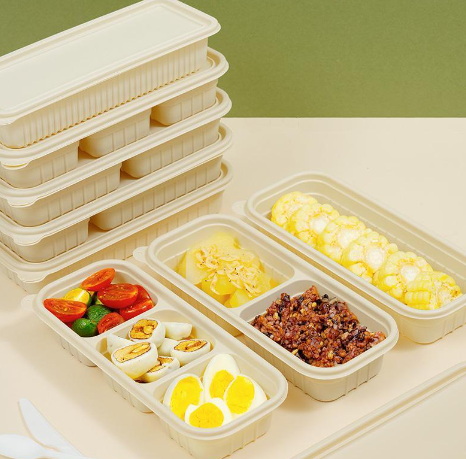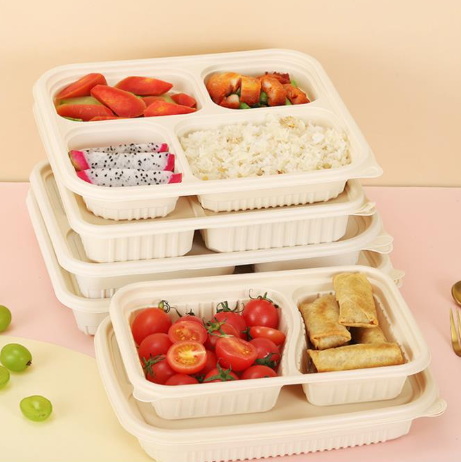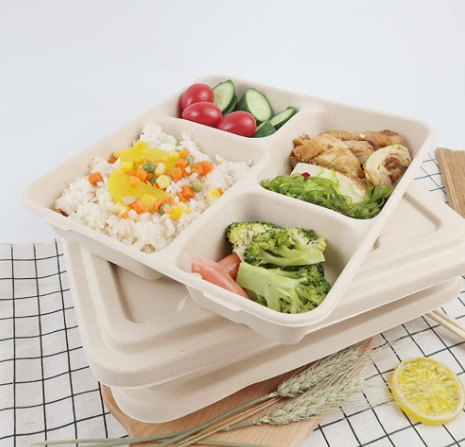
Content Menu
● Introduction to Disposable Lunch Box Containers
>> Types of Disposable Lunch Box Containers
● Reusing Disposable Lunch Box Containers
>> Storage Solutions
>> Gardening Projects
>> DIY Crafts
● Recycling Disposable Lunch Box Containers
>> Challenges in Recycling
>> Recycling Process
● Tips for Consumers and Businesses
>> Consumer Tips
>> Business Tips
● Innovations in Sustainable Packaging
>> Bioplastics
>> Mushroom-Based Packaging
>> Edible Cutlery
● Community Initiatives for Sustainability
>> Community Recycling Programs
>> Community Gardens
>> Educational Workshops
● Conclusion
● FAQs
>> 1. What types of disposable lunch box containers are recyclable?
>> 2. How can I reuse disposable lunch box containers?
>> 3. What are the challenges in recycling disposable lunch box containers?
>> 4. Can all types of plastic lunch box containers be microwaved?
>> 5. How can businesses contribute to reducing waste from disposable lunch box containers?
The question of whether disposable lunch box containers can be reused or recycled is a pressing environmental concern. With the rise of takeout and delivery services, the use of disposable lunch boxes has skyrocketed, contributing significantly to plastic waste. In this article, we will explore the possibilities of reusing and recycling these containers, discuss the challenges involved, and provide practical tips for consumers and businesses.

Introduction to Disposable Lunch Box Containers
Disposable lunch box containers are primarily made from plastic, particularly polypropylene (PP), which is valued for its durability and recyclability. However, despite their recyclable nature, most of these containers end up in landfills or oceans due to inadequate recycling infrastructure and consumer practices.
Types of Disposable Lunch Box Containers
- Plastic Containers: These are the most common type, often made from PP. They are rigid, transparent, and have a high recycling value.
- Paper and Cardboard Containers: These are biodegradable and can be composted or recycled if clean.
- Foam Containers: Made from polystyrene, these are generally not recyclable and contribute significantly to pollution.
Reusing Disposable Lunch Box Containers
Reusing disposable lunch box containers is an effective way to reduce waste. Here are some creative ways to repurpose them:
Storage Solutions
You can use old lunch boxes to store small items like buttons, safety pins, or even as a desk organizer for pens and pencils. This not only reduces waste but also helps keep your workspace tidy.
Gardening Projects
Larger containers can be converted into mini planters for herbs or succulents, adding a touch of greenery to your home. This is a great way to reuse containers while also promoting sustainability in gardening.
DIY Crafts
Transform old containers into unique craft projects, such as bird feeders or decorative items. This can be a fun and creative way to engage with family or friends while reducing waste.
Recycling Disposable Lunch Box Containers
Recycling is crucial for managing the environmental impact of disposable lunch boxes. However, the process is complex due to food residue and contamination.
Challenges in Recycling
1. Food Residue: Containers must be thoroughly cleaned before recycling to avoid contamination.
2. Material Variability: Not all plastics are recyclable in every area, so it's essential to check local recycling guidelines.
3. Infrastructure Limitations: Many communities lack the facilities to process certain types of plastic, making recycling more difficult.
Recycling Process
The recycling process involves several steps:
1. Collection: Containers are collected and sorted based on material type.
2. Cleaning: Containers are washed to remove food residue.
3. Crushing: Containers are crushed into smaller pieces.
4. Pelletizing: Crushed plastic is melted and formed into pellets for reuse.

Tips for Consumers and Businesses
Consumer Tips
- Clean Containers: Ensure containers are free of food residue before recycling.
- Check Local Guidelines: Understand what materials are recyclable in your area.
- Reuse Containers: Repurpose containers for storage or DIY projects.
- Choose Sustainable Options: Opt for biodegradable or recyclable containers when possible.
Business Tips
- Choose Recyclable Materials: Opt for containers made from recyclable materials.
- Encourage Recycling: Partner with recycling programs to collect used containers.
- Educate Customers: Inform customers about the importance of recycling and reusing containers.
- Implement Sustainable Packaging: Consider using compostable or biodegradable packaging alternatives.
Innovations in Sustainable Packaging
The packaging industry is witnessing a shift towards more sustainable options. Innovations include the use of plant-based bioplastics, mushroom-based packaging, and edible cutlery. These alternatives not only reduce plastic waste but also offer consumers eco-friendly choices.
Bioplastics
Bioplastics are made from renewable biomass sources such as corn starch or sugarcane. They are biodegradable and can replace traditional plastics in many applications.
Mushroom-Based Packaging
Mycelium, the root structure of mushrooms, can be used to create biodegradable packaging materials. This innovative approach offers a sustainable alternative to foam packaging.
Edible Cutlery
Edible cutlery made from natural ingredients like cornstarch or sugarcane can replace plastic utensils, further reducing plastic waste.
Community Initiatives for Sustainability
Community-driven initiatives play a crucial role in promoting sustainability. Local recycling programs, community gardens, and educational workshops can inspire individuals to adopt environmentally friendly practices.
Community Recycling Programs
Many communities have started their own recycling programs to collect and process recyclable materials. These programs often include educational components to raise awareness about the importance of recycling.
Community Gardens
Community gardens not only promote sustainable gardening practices but also serve as hubs for environmental education. They often incorporate reused materials, such as old lunch boxes, into their projects.
Educational Workshops
Workshops focused on sustainable living provide hands-on experience with recycling and reusing materials. They are effective in engaging both children and adults in environmental conservation efforts.
Conclusion
Disposable lunch box containers can indeed be reused and recycled, but it requires effort from both consumers and businesses. By adopting sustainable practices such as reusing containers for storage or crafts and ensuring they are properly cleaned and recycled, we can significantly reduce plastic waste. It's crucial for governments and recycling facilities to improve infrastructure and provide clear guidelines for recycling different types of materials. Additionally, innovations in sustainable packaging and community initiatives are key to creating a more environmentally conscious society.

FAQs
1. What types of disposable lunch box containers are recyclable?
- Answer: Generally, rigid plastic containers made from polypropylene (PP) are recyclable. However, recyclability depends on local facilities and the cleanliness of the containers.
2. How can I reuse disposable lunch box containers?
- Answer: You can reuse them as storage containers, planters for small plants, or transform them into DIY crafts.
3. What are the challenges in recycling disposable lunch box containers?
- Answer: The main challenges include removing food residue and dealing with contamination, as well as variability in recyclable materials across different regions.
4. Can all types of plastic lunch box containers be microwaved?
- Answer: No, not all plastic lunch box containers are safe for microwaving. Only containers made from polypropylene (PP) can withstand high temperatures.
5. How can businesses contribute to reducing waste from disposable lunch box containers?
- Answer: Businesses can contribute by choosing recyclable materials, encouraging recycling practices, and educating customers about the importance of sustainability.

















